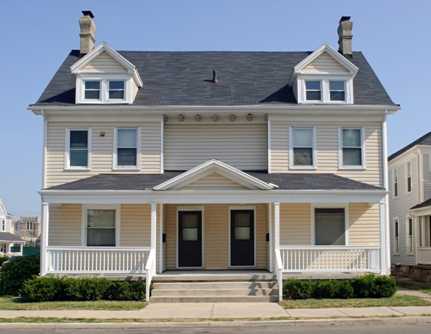Loyal readers of The Current may recall our post “Energy Efficient Mortgages: The Next Big Thing?,” which identified the need for an effective mortgage product to help bring older, less efficient homes up to modern day energy efficiency standards. In that post, we presented the Federal Housing Administration’s Energy Efficient Mortgage (FHA EEM) as a potential solution to this market problem, but noted some of the obstacles impeding its more widespread use. Building on this, last year we completed additional research on the FHA EEM in an attempt to better identify why it is not more widely used and uncover ways to improve the product. This blog post digs into some of our key findings.
Before getting into the details, here’s a brief refresher on the FHA EEM. At its core, the product allows a borrower to finance a package of home energy improvements during either a home purchase or refinance. After an initial pilot in the early ’90s, the FHA EEM program was expanded nationwide in 1995. However, unfortunately over the past two decades the product has performed poorly. Consider the graph below, which reveals the low number of FHA EEMs originated nationwide in the past several years (note: no data was found for 2008 and 2009). Considering that FHA insured over 1.3 million single-family mortgages in 2013, it is clear that more work needs to be done to increase the FHA EEM’s market presence.
In compiling our new study, “Designing a Mortgage Process for Energy Efficiency,” we interviewed a variety of homebuying professionals, including housing counselors, real estate agents, and mortgage lenders to see what work, exactly, would help boost the use of the FHA EEM. Perhaps unsurprisingly, our interviews revealed that stakeholder education is critical for the product to gain more traction in the market. On one hand, homeowners and prospective homebuyers need to be able to recognize the financial and environmental benefits of increasing home energy efficiency. On the other hand, the same can be said for homebuying professionals, many of whom are uninformed about promising products such as the FHA EEM. A key way to address this knowledge gap is to introduce home energy efficiency material into housing counseling training and homebuyer education programs, perhaps by having an energy efficiency champion come in to teach a “green module” as part of the curriculum.
While stakeholder education is undoubtedly important, the structure of the FHA EEM must also be amended in order to significantly increase its popularity. Introducing a paid facilitator to the EEM process could raise the product’s appeal by reducing the workload of homebuyers and lenders as it relates to implementing the tool. You see, in addition to the typical home inspection, loan application, and other lender documents, the FHA EEM also requires a Home Energy Rating System (HERS) rater to assess the home, suggest potential energy improvements, and provide cost and savings estimates associated with those improvements. A paid facilitator could help streamline the process of meeting all of these requirements. In addition, extra lender compensation should be explored as a way to incentivize lenders to originate this relatively complex product.
Through interviews IMT conducted, we found there were several different perspectives on how to best handle the HERS component of the FHA EEM. One mortgage lending expert thought that FHA should permit multiple types of energy inspections, including those performed by non-HERS raters, to foster competition and reduce the home energy evaluation costs incurred by borrowers. Another interviewee suggested that an energy audit with a blower door test could suffice, and that pursuing a HERS rating may not be worth the extra time and cost. A follow-up study is recommended to delve into these options and investigate how home energy evaluations can be optimally integrated into the FHA EEM framework.

A seemingly “out-of-the-box” idea, but one that makes sense when considering the priorities of prospective homebuyers, is to tie financing for energy efficiency with financing for cosmetic improvements, such as kitchen and bathroom remodels. These cosmetic improvements are widely desired and therefore this integration strategy could stimulate further interest in home energy efficiency improvements and help make LED lighting go hand in hand with granite countertops.
This is just a sampling of what we found when we dug a little deeper on the barriers to widespread use of the FHA EEM. For more info, you can read our full report here.
It’s important to also note that although its potential impact is large, the FHA EEM is just one tool for addressing the broader issue of home energy efficiency investment. FHA is working hard to develop a more energy-efficient single-family housing stock, and industry groups such as the Residential Energy Services Network (RESNET) and the Mortgage Bankers Association (MBA) can work with FHA to achieve this goal. Progress is also being sought on other fronts, such as through the continuous support of the SAVE Act, which seeks to integrate energy cost savings into mortgage underwriting guidelines and thus remove a critical barrier to greater home energy efficiency investment.
IMT will continue to follow the FHA EEM and related efforts closely in 2015, so stay tuned for future updates.
Image: Shutterstock